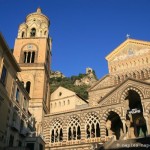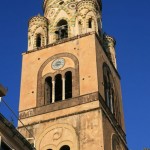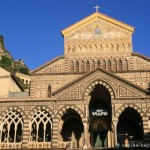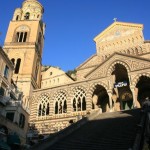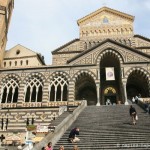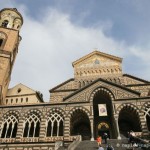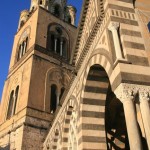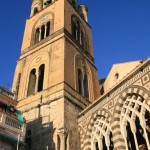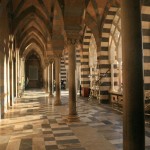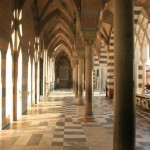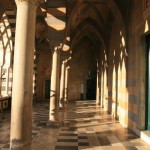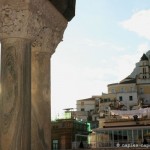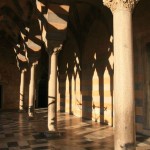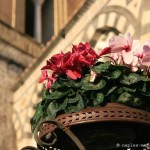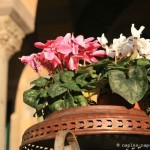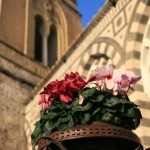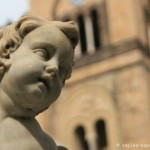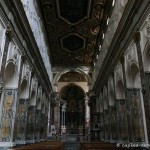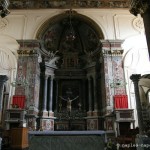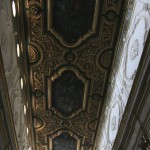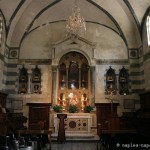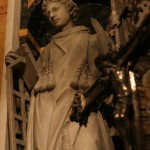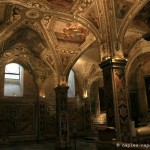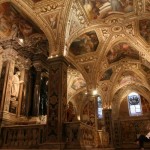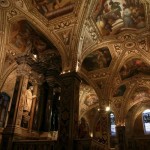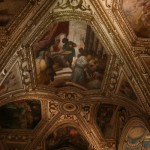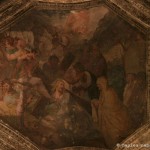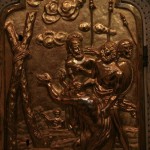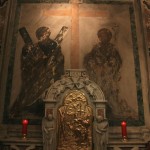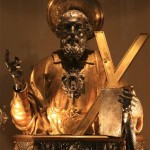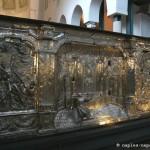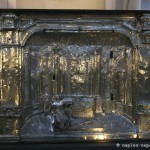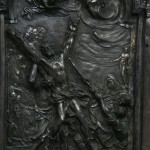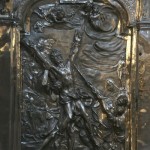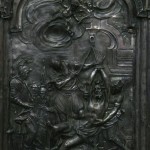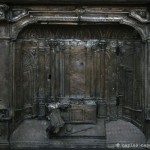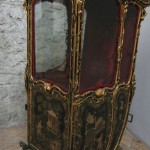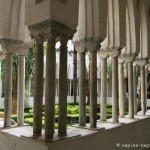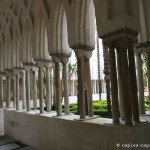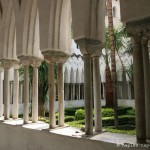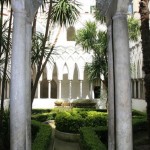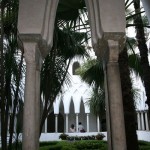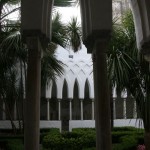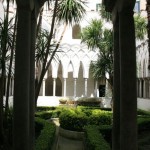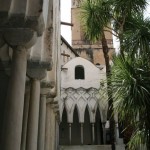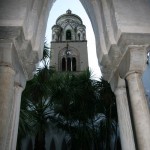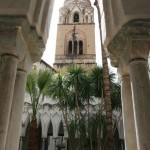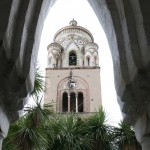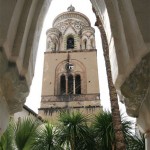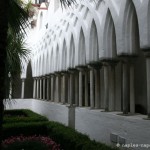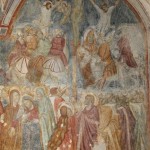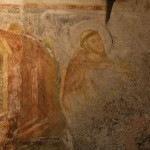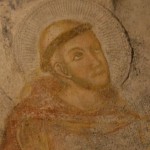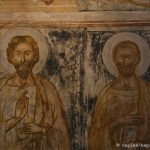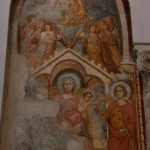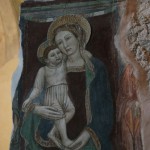Originally, there were two basilicas, one dating from around the year 1000 and the other half of the ninth century.
In the thirteenth century, the building were united in one which has since five naves.
The campanile dates back to the 12th century.
The Cathedral of St. Andrew of Amalfi is dedicated to the saint patron of the city
History
Originally there were two basilicas in Amalfi, each one with three naves. The first corresponds to the old cathedral built by Duke Manso I, Prince of Salerno, around the year 1000, the second, larger, was erected in the middle of the ninth century.
In the early thirteenth century, the two places of worship were united in one to five naves. Extensions and reconstructions extending from the sixteenth and eighteenth gave it its present appearance.
Description
The neo-Gothic facade was built in the nineteenth century by Errico Alvino, preceded by a corridor connecting it to the bell tower, the cloister of Paradise and the chapel of the Crucifix.
The bell tower
Existing since 1180 and completed during the 13th century, it was restored in the 18th century. The exterior is surmounted by an Arabian coronation and decorated with arabesques of yellow and green earthenware of majolica influence.
- Cathédrale d’Amalfi
- Piazza Duomo
Interior of the cathedral
The main portal is frescoed by Domenico Morelli and Paul Glass. Its bronze door was melted at Constantinople.
The renovated interior in Baroque style, is formed of a basilica plan with transept and apse, covered with marquetry marble and sheltering ancient columns.
The walkways are covered by a coffered ceiling.
The baroque high altar has a large canvas depicting the martyrdom of the apostle St. Andrew, protector of Amalfi, fishermen and sailors.
The chapels are occupied by works of Gothic and Renaissance. In one of them, a wooden group representing the “Apparition of the Archangel Saint Michael in San Felice”, in another is represented the Virgin between St. Philip and a bishop.
Crypt
Basilica of the Crucifix
The church was built in the Middle Ages, restored in the Baroque period, then in 1931 with the removal of Baroque additions. It was abandoned for decades before reopening and restoration in 1996.
The interior of three naves is divided by columns supporting slightly pointed arches. In the galleries are works of the Gothic period, Roman sarcophagi, as well as remains of frescoes and fragments of mosaics from the 13th century from the facade of the old cathedral.
Most of the decorations were transported to the Diocesan Museum.
- Altare, sant andrea
- Altare, sant andrea
- Altare, sant andrea
The cloister of Paradise
Collapsed and almost abandoned in the seventeenth century, the cloister was restored in 1908.
The cloister of Paradise is a real small oriental corner in the south of Italy. It consists of a portico with intertwined arcades, typical of the Arab-Norman style, supported by fine double columns.
It was built between 1266 and 1268 by Filippo Augustariccio as a cemetery for the illustrious citizens of the Amalfi Coast. On the sides of the colonnade are six painted chapels whose remains are from the fourteenth century, representing the Crucifixion (attributed to Robert d’Oderisio), a Christ Pantocrator and the stories of saints Cosmas and Damian, five sarcophagi of the roman time (representing the marriage of Peleus and Thetis) re-used in the Middle Ages.
Fragments of the old Romanesque church and the floor of the cathedral are placed on the walls.
- fresque
- Fresque


